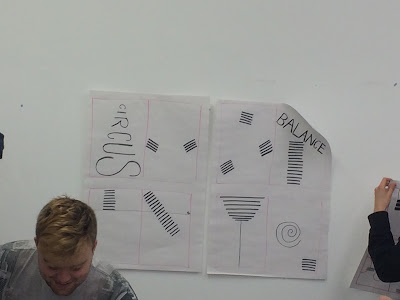Visual Identity
Briefing 30-11-2016
Final Crit 13-12-2016
Unit Deadline 17-02-2017
Briefing 30-11-2016
Final Crit 13-12-2016
Unit Deadline 17-02-2017
To design an eye-catching visual identity for an existing small local business.
Requirements
An identity which can be applied to at least 5 relevant items which demonstrate the success of your solution(s).
Back up work in the form of research, multiple idea generation and development of your solution.
Context
A strong visual identity is the most important consideration of any organisation, in order to make their brand successful. This tells everyone who you are and what you do. The identity is an essential part of the brand and needs to be simple, memorable, distinct, relevant, engaging and interesting.
The Challenge
During this project, you will design a unique, eye-catching visual identity taking into account all relevant aspects such as signage, packaging, livery, stationery.
This project is designed to enable you to gain an understanding of what creating a visual identity for a brand involves and to recognise the importance of relevant ideas generation and research on a theme in order to come up with individual, eye-catching solutions.
You will be provided with the subject for your identity.
The Audience
The audience will be speci c to the subject matter.
Things to Consider
Visual Identity is the visible part of a brand. It may incorporate a logo, or it may use other devices to make it recognisable.
Successful brands do not start with a logo. They are about meaning which is shared, powerful and positive eg John Lewis: “never knowingly undersold”. Brands must be:
• Authentic (true to themselves) – they don’t lie
• Distinctive
• Compelling – facts are boring, stories are good
Research thoroughly your chosen subject. Ensure you understand the following:
• organisation background: history, origins
• market: what type of person is/could the organisation be aiming at
• brand bene ts: what does/will the brand give to the consumer • brand personality: characteristics of the brand
You may need to reinvent the brand and imagine it as a larger organisation. Analyse your chosen brand and show your ndings in your research. During the research stage it is helpful to nd or create a story for your brand, or to nd the USP (unique selling point).
Generate multiple creative ideas, which work across a wide range of
applications and show an understanding of speci c requirements and
restrictions relevant to the brand, when applying your identity.
Applications you may consider are main sign, web site home page, app design, menu, carrier bag, ticket, Tee shirt, vehicle livery, car sticker, business card, letterhead, signage. There may be others, which will be speci c to your subject.
Reference material
Wiedemann, J., (2009) Brand Identity Now! Taschen
Davis, M., (2009) The Fundamentals of Branding Ava Academia
Wheeler, A., (2009) Designing Brand Identity John Wiley and Sons
McAlhone, B., Stuart, D., A Smile in the Mind Phaidon
Applications you may consider are main sign, web site home page, app design, menu, carrier bag, ticket, Tee shirt, vehicle livery, car sticker, business card, letterhead, signage. There may be others, which will be speci c to your subject.
Reference material
Wiedemann, J., (2009) Brand Identity Now! Taschen
Davis, M., (2009) The Fundamentals of Branding Ava Academia
Wheeler, A., (2009) Designing Brand Identity John Wiley and Sons
McAlhone, B., Stuart, D., A Smile in the Mind Phaidon




